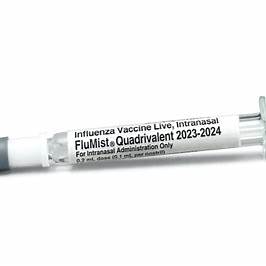In a landmark shift for vaccine access, AstraZeneca has launched FluMist Home, the nation’s first nasal spray influenza vaccine available for delivery and self- or caregiver-administered use at home. This move follows the U.S. Food and Drug Administration’s approval last fall that cleared FluMist for home use, expanding what had long been a clinic-based service into a direct-to-consumer option.
FluMist is no newcomer—since 2003 it has been offered in health care settings as a needle-free alternative for those aged 2 through 49. But until now, it had to be administered by a medical professional. Under the new model, eligible users complete an online medical screening, which is reviewed by a licensed provider, and then the spray is shipped to their door. For adults aged 18 to 49, use is self-administration; for children ages 2 to 17, a parent or caregiver gives the dose.
The goal is clear: remove logistical barriers, especially for those who dread needles, lack easy access to clinics, or juggle schedules too tight for appointments. In 34 states so far, FluMist Home is operational this flu season, with plans to expand further in coming years. The vaccine itself remains the same live attenuated intranasal formula, intended to stimulate immune response in the nasal passages as well as in the bloodstream.
Supporters hail this as a potentially transformative step in public health. With flu vaccination rates lagging after the pandemic years, the convenience of at-home delivery could encourage more people to get vaccinated, especially in communities or populations that struggle with access. Logistics are serious business—AstraZeneca ships the vaccine under refrigerated conditions, and the program charges a modest $8.99 for shipping and processing, though most users with commercial insurance should face little to no out-of-pocket cost.
Yet challenges and caveats accompany the optimism. Not every state has embraced FluMist Home yet, citing local pharmacy or medical practice regulations as barriers. Some individuals, including those with weakened immune systems, certain chronic conditions, or special age brackets, will still need to rely on traditional vaccines administered in clinics. Also, proper self-administration matters: misalignment of the spray in the nostrils or incorrect timing could compromise effectiveness, critics caution.
Public health experts note that for a self-administered vaccine to make real impact, people must trust both the system and their own ability to follow instructions. Detailed guides, videos, and support channels accompany the FluMist Home rollout to help users navigate shelf life, storage, and safe disposal. Some observers also point out that while the nasal vaccine offers one pathway, it doesn’t replace all flu shots—some age groups or high-risk individuals will still prefer or require injectable formulations.
Despite the caveats, the introduction of FluMist Home marks a pivot in how we think about preventive medicine: flu vaccination, once anchored to clinics, now has the potential to become just another household essential you order online. Whether people embrace it, swallow the convenience, and boost protection across communities remains to be seen—but the gate to at-home flu care has finally cracked open.




